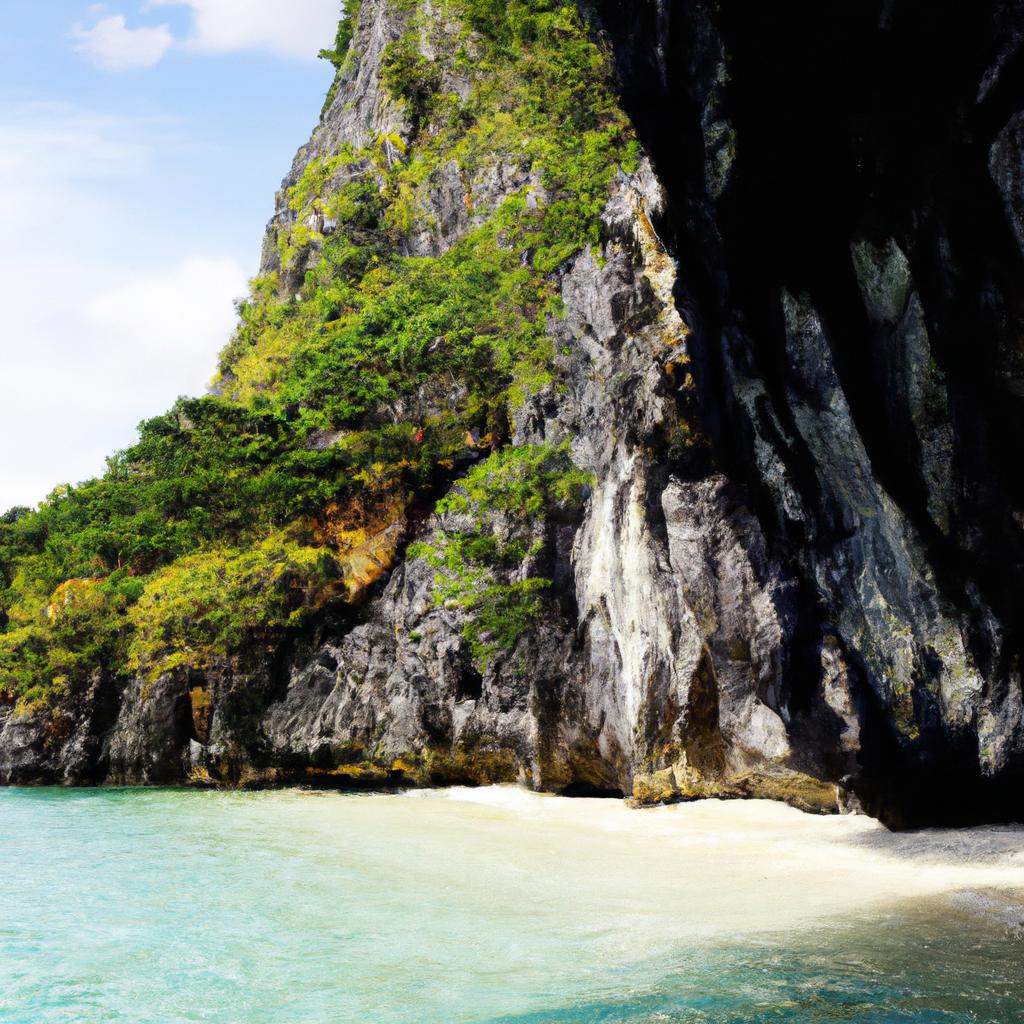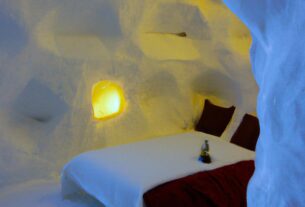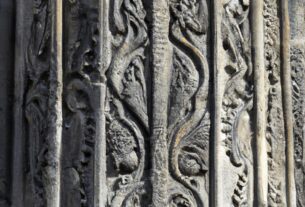As a sought-after destination, Hawaii boasts stunning islands waiting to be explored. However, not all of these islands are accessible to visitors. In this article, we will delve into the world of Hawaii’s restricted islands and uncover the ones that are off-limits to tourists.
Hawaii is not only a place of exceptional beauty but also holds tremendous cultural significance. Therefore, understanding the reasons behind certain islands’ restrictions is crucial. These islands are home to unique ecosystems and bear historical and cultural importance for the Hawaiian people. By respecting these restrictions, we can help preserve these invaluable places for future generations.
Knowing which islands are restricted is also essential for planning your Hawaii itinerary. With an abundance of islands to choose from, it is important to discern which ones are accessible and which ones are not. By the end of this article, you will have a better understanding of Hawaii’s restricted islands and their significance in preservation efforts.
So, let’s embark on a journey into the world of Hawaii’s restricted islands and explore the beauty and importance of these hidden destinations.
Niihau Island
Description of Niihau Island
Niihau Island, famously known as the “Forbidden Island,” is a privately-owned gem situated off the coast of KauaThe island spans approximately 18 miles in length and 6 miles in width, inhabited by only around 170 people. Niihau is renowned for its picturesque landscapes, pristine beaches, and unique cultural heritage.
Reasons why Niihau is off-limits to tourists
Despite its natural allure, Niihau remains closed to tourists. The island is the private property of the Robinson family, who has owned it since 1864. The Robinsons have deliberately chosen to keep the island inaccessible to outsiders to preserve its distinct culture and way of life.
Moreover, Niihau accommodates a US Navy missile range, designating it as a restricted area for safety purposes. The island is also home to several endangered species, such as Hawaiian monk seals and green sea turtles. By maintaining Niihau’s closure to visitors, the Robinson family and the US Navy can safeguard this delicate ecosystem and preserve the island’s natural splendor.
Historical and cultural significance of Niihau
Niihau stands as a testament to the rich history and cultural significance of the native Hawaiian people. With over 800 years of continuous habitation, this island has played a vital role in preserving traditional Hawaiian culture. The island’s inhabitants still widely speak the Hawaiian language and continue traditional practices like hula and chant.
Furthermore, Niihau nurtures unique art forms, including the creation of intricate and exquisite Hawaiian shell leis. This island holds immense cultural and historical value, and by keeping it closed to outsiders, the Robinson family contributes to safeguarding this essential piece of Hawaiian heritage.
Exploring Kahoolawe Island: A Restricted Gem in Hawaii
Description of Kahoolawe Island
Kahoolawe Island, nestled off the coast of Maui, is the smallest among the eight Hawaiian islands. Despite its size, Kahoolawe possesses unparalleled beauty and exceptional cultural significance. The island embraces a diverse range of flora and fauna, including endangered species like the Hawaiian monk seal and green sea turtle.
Reasons why Kahoolawe is restricted
Kahoolawe has been off-limits since the 1940s due to its extensive military use. The island served as a bombing range for the US military during World War II and was later utilized for training exercises until the 1990s. This extensive usage inflicted significant environmental damage, resulting in the island’s designation as a restricted area.
Environmental restoration efforts on Kahoolawe
Since the 1990s, substantial efforts have been invested in restoring the environmental damage caused by military activities. These endeavors involve the removal of unexploded ordnance and the reintroduction of native vegetation. The establishment of the Kahoolawe Island Reserve Commission in 1993 further ensures the island’s restoration and protection for future generations.
Although Kahoolawe remains closed to visitors, there are opportunities to volunteer and actively participate in restoration efforts. By joining these initiatives, visitors can assist in preserving the island’s unmatched beauty and cultural significance.
In conclusion, Kahoolawe Island stands as a restricted gem in Hawaii, possessing invaluable cultural and environmental significance. Although visiting the island is prohibited, engaging in restoration efforts allows individuals to contribute to the preservation of this unique location for future generations to appreciate.
Forbidden Island (Kaho’olawe)
Description of Forbidden Island
Situated off the coast of Maui, Kaho’olawe is a small and uninhabited island commonly referred to as the “Forbidden Island.” Covering approximately 45 square miles, Kaho’olawe is the smallest among the eight main Hawaiian Islands. The island primarily consists of volcanic rock and sand, with no permanent freshwater sources available.
Historical Significance of Forbidden Island
Kaho’olawe bears immense cultural and historical significance to the Hawaiian people. It is considered a sacred place that has served as a spiritual retreat for Hawaiian priests and healers throughout the ages. During World War II and the Vietnam War, Kaho’olawe was utilized as a military training site, enduring substantial bombing and target practice.
Reasons Why It Is Not Allowed to Visit
Due to the extensive military activities conducted on Kaho’olawe, the island is still littered with unexploded ordnance, posing significant danger to visitors. In 1990, the US Navy transferred ownership of the island to the State of Hawaii, with the condition that it be cleared of explosives and restored to its natural state.
Efforts have been made to remove explosives and restore the island’s native ecosystem, but a majority of Kaho’olawe remains inaccessible to visitors. The island is also home to several endangered species, including the Hawaiian monk seal, emphasizing the need for their protection and the preservation of their habitats.
In conclusion, Kaho’olawe is an exceptional and significant island in Hawaii that remains off-limits to visitors. The presence of unexploded ordnance and ongoing restoration efforts necessitates respect for the restrictions imposed. Preserving this meaningful place guarantees that future generations will have the opportunity to admire and appreciate its unique wonders.
Molokini Crater
A Unique Underwater World
Molokini Crater is a crescent-shaped island located off the coast of MauWhat sets this island apart is that it is not actually an island but an underwater volcanic cinder cone. The shape of the crater creates a natural haven for marine life, making it an ideal spot for snorkeling and scuba diving.
The crystal-clear waters surrounding Molokini Crater are home to over 250 species of fish, many of which are endemic to HawaThe vibrant coral reefs and underwater rock formations make it a popular destination for both tourists and locals.
Why It’s Off-Limits
Despite its popularity, Molokini Crater requires a permit for visitors. The Hawaii Department of Land and Natural Resources has implemented strict regulations to protect the delicate marine ecosystem in the area. To minimize the negative impact of tourism, snorkel and scuba tours are closely monitored, and visitors must adhere to stringent guidelines to safeguard the ecosystem.
Preserving Marine Life in Hawaii
Molokini Crater represents just one of the countless unique marine ecosystems in HawaThe islands harbor a diverse array of marine life that requires preservation for future generations to enjoy. By respecting the restrictions and practicing responsible tourism, we can contribute to the protection of the extraordinary beauty and diversity of Hawaii’s marine life. The restrictions imposed on Molokini Crater serve as a small step toward safeguarding Hawaii’s natural resources and ensuring their longevity.
Conclusion
In conclusion, Hawaii enthralls visitors with its breathtaking scenery and cultural significance. It is vital to identify which islands are off-limits to tourists. Niihau and Kahoolawe, closed to the public due to their cultural and historical importance, and Molokini Crater, restricted to protect marine life, depict the essence of Hawaii’s restricted islands.
Respecting these limitations ensures the preservation of these remarkable places for future generations. As responsible tourists, it is our duty to protect the environment and cultural heritage of the places we visit. By understanding and honoring the restrictions placed on these islands, we can plan our Hawaii itinerary accordingly and contribute to the preservation of these invaluable destinations.
As a website dedicated to nature, gardening, and animals, TooLacks prioritizes responsible tourism and environmental preservation. By adhering to the restrictions set by the Hawaiian government, we collaborate in safeguarding the beauty and significance of Hawaii’s restricted islands.
Remember, the beauty and cultural significance of Hawaii’s restricted islands are worth cherishing for generations to come. Let us work together to shield these exceptional places, ensuring their perpetual wonder and inspiration.



